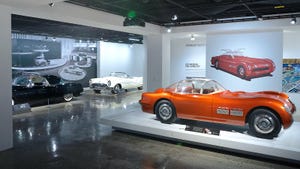May 18, 1998

Engineering equations apply to much more than just engineering. Registered civil engineer and former Boeing structural engineer, Patricia Kramer, took equations normally used to calculate the structural integrity and placement of cargo doors on an airliner to explain the evolutionary record of early humans. "The equations can predict how much energy is required for something to move in space," says Kramer, now a University of Washington (Seattle, WA) doctoral candidate and lecturer in anthropology. "If you take them and develop models that take into account the different leg lengths for Lucy and modern humans, and calculate the different levels of energy required for each, the result is a comparison of how much energy is required for Lucy and a modern human to move at any speed." Lucy is the name of the 40%-complete skeleton of a small female Australopithecus afarensis, discovered by Donald Johanson in Ethiopia in 1974. Kramer found that Lucy and her colleagues walked through life in no more than a stroll, matching the environmental demands of the time. Call: (206) 286-6698 or e-mail: [email protected].
About the Author(s)
You May Also Like





